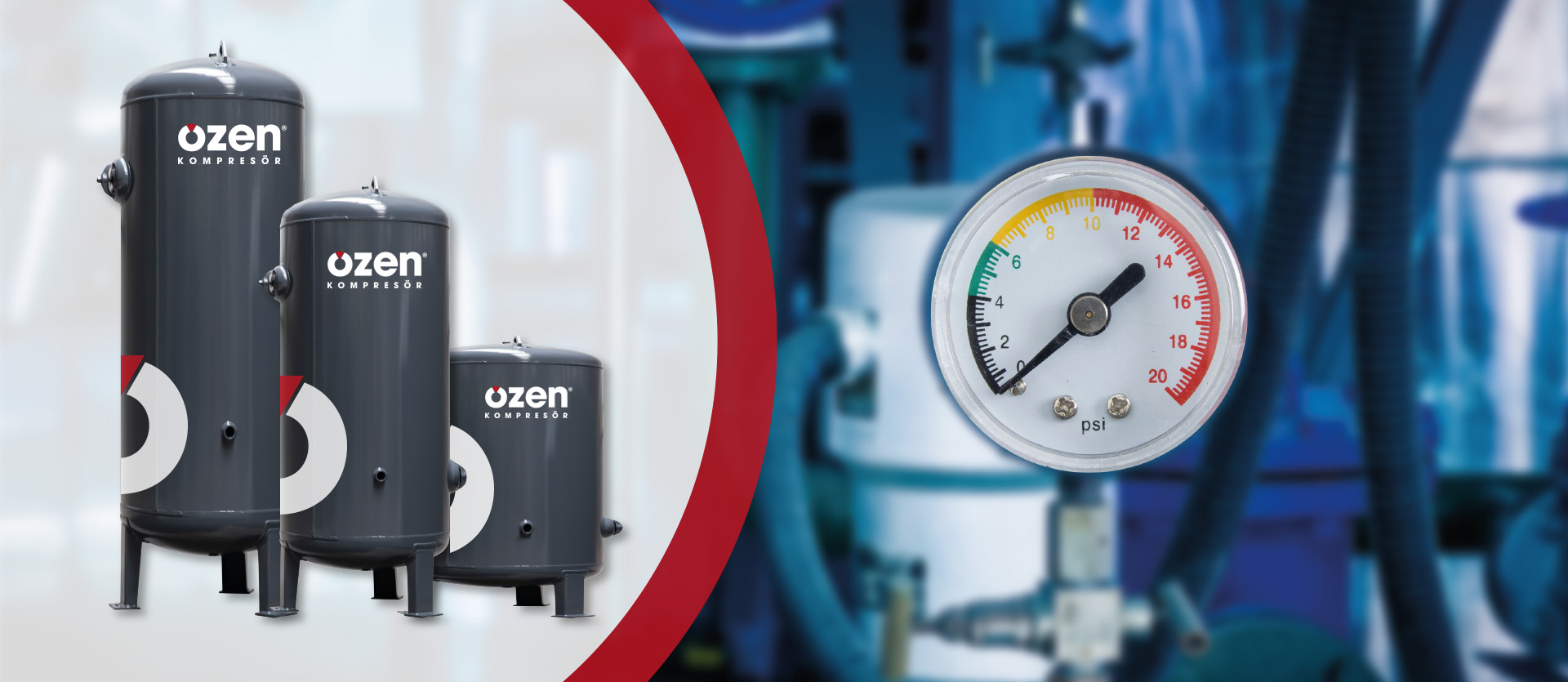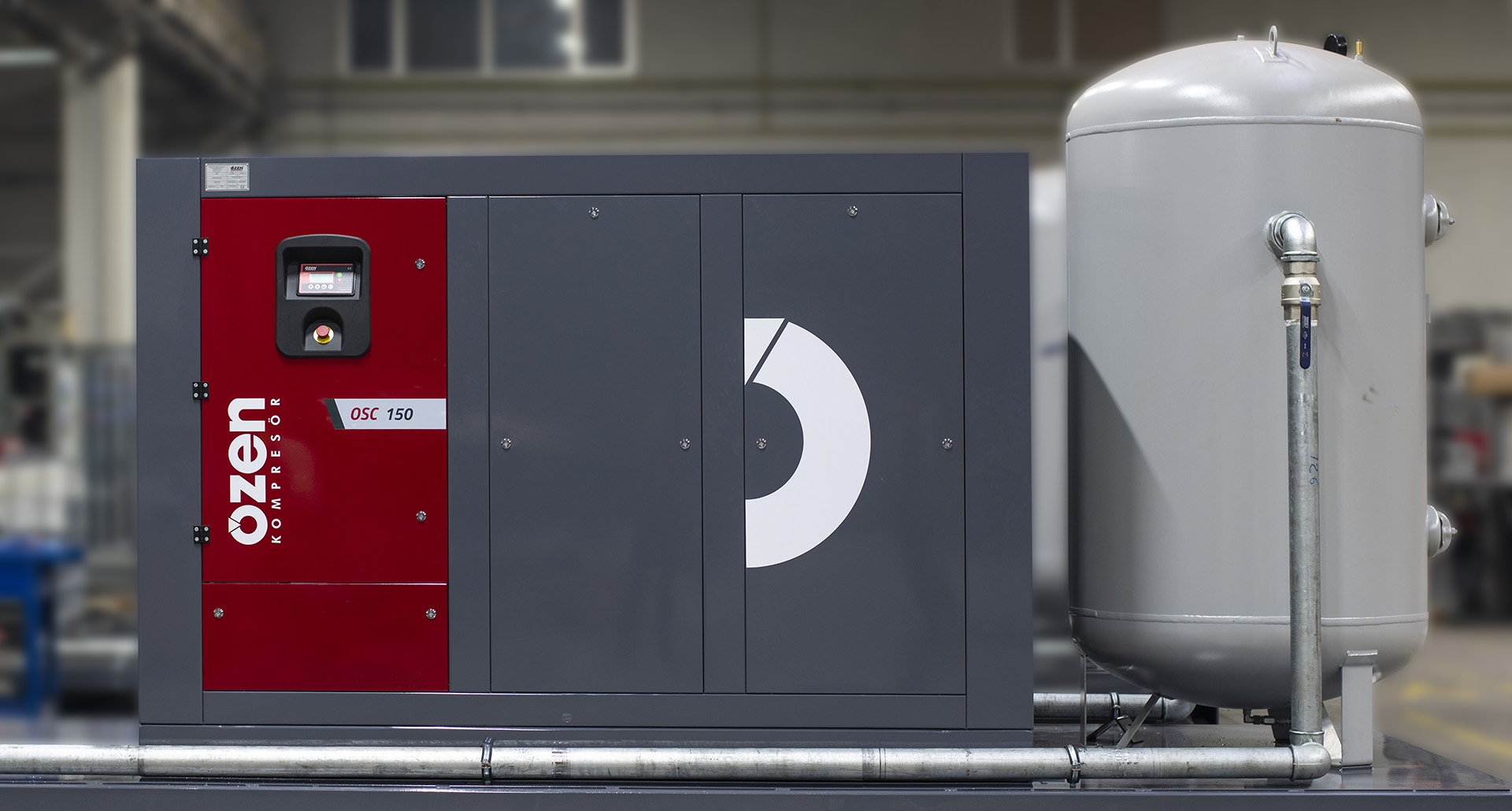What is Compressor Air Capacity and How is it Calculated?
24 April 2023, Monday

Air compressors have many complementary elements to provide the compressed air that businesses need in a short time. These elements help the compressor operate efficiently. One of the most important parts of the compressor, the compressed air tank is a basic element that determines compressor air capacity. Compressor air capacity is crucial for businesses. This article explains compressor air capacity in detail.
What Is a Compressed Air Tank?
A compressed air tank is a device designed to store high-pressure air and use it when necessary. These tanks are used in many industrial and commercial applications.
Compressed air tanks are usually made of steel or aluminium alloys, and the air in them is usually maintained at pressure levels between 100 and 232 psi. The dimensions of the tanks can vary depending on their intended use and application. For example, the tank used for a small household air compressor may be smaller than the tank used to meet the needs of a large industrial plant.
Compressed air tanks are used in many industrial processes, such as manufacturing, food processing, chemical processing, the oil and gas industry, automotive industry, construction, and mining. Compressed air tanks can pose a serious danger if not used correctly. Improper installation, irregular maintenance, and damaged tanks can cause the risk of explosion or fire. Therefore, the installation, maintenance, and repair of compressed air tanks must be carried out by trained and experienced personnel.

What is Compressor Air Capacity?
Compressor air capacity is a measure of how much air a compressor can store. This capacity depends on the size and pressure level of the air tank. An air tank is a device that stores the high-pressure air produced by a compressor. These tanks are used to balance the air pressure and eliminate fluctuations in the air supply. The size of the tank must be greater than the compressor's air-generating capacity. In addition, the pressure level of the air tank must be higher than the pressure level in the air supply.
Compressor air capacity refers to the maximum volume of air inside the air tank. It is usually measured in gallons or litres. For example, the air capacity of a compressor can be specified as 20 gallons. This means the air tank can store 20 gallons of air.
Compressor air capacity can vary for many industrial and home uses. Small household compressors typically have an air capacity of 1 to 6 gallons, while large compressors designed for industrial use may have air capacities greater than 80 gallons.
• If your business needs a lot of air and you are experiencing fluctuations in demand, if you think you need an air tank for your business, be sure to position this air tank close to the compressor. Air tanks can have very large capacities according to the needs of the business. Since they have very large capacities, they are usually positioned outside the business to save space. But the air tank must be positioned close to the compressor both for the air conditions and to access the needed air easily.
• For many businesses that use screw air compressors, adding a tank capacity of approximately 14 litres for every cubic meter of compressor capacity per minute will maximize the efficiency of the compressed air system. Screw compressors work quite differently from normal compressors. You must pay attention to this element to keep the compressor system healthy and increase efficiency in the work done.
• If air tanks are to be used in freezing environments, you must take the necessary precautions to prevent condensate discharges from freezing, and you should prefer tank types designed to work in lower ambient temperatures if possible. If your business operates in a much colder area than normal businesses, you should definitely choose an appropriate air tank.
• A tank slightly larger than the calculated need would be best when selecting an air tank. This is because, as we have just mentioned, there will always be fluctuations in compressor use in businesses. If you choose an air tank that your business can use without normal fluctuations, your business will suffer if there is any fluctuation. Therefore, it would be best to buy a tank that is larger than the calculated compressor capacity to avoid disruptions in the work.
• In cases where the compressed air system needs a dryer, you should use two air tanks, one upstream of the dryer and one downstream. This is to prevent disruptions in the work due to the fluctuations caused by the dryer.
How is Compressor Air Capacity Calculated?
Compressor air capacity is an extremely important specification for the compressor's operational efficiency. This capacity determines how much air a compressor can store and how long it can keep air flowing. Air capacity is calculated by considering certain factors.
An easy method of estimating current and future air demand is to figure out the air demand by factoring in the equipment connected to the compressor and calculating their usage times. You will need a list of the machines used in such calculations, data for their hourly air consumption, and their expected usage times. If data on air consumption and usage times are not available, you can use standard values. Estimating the life of machines can be a little difficult, so you should compare the values taken when calculating compressor capacity with the consumption values measured in approximate applications. Large air-powered machines such as packaging machines and paint sprayers, for example, are often used for long periods of time, working continuously despite low usage factors. Compressor capacity is actually calculated based on the total nominal compressed air requirement. The free outlet flow rate in the compressors should meet this air consumption rate.
The air capacity of a compressor is usually calculated using pressure and volume factors. Pressure is the most important factor for determining air capacity. As the pressure increases, the air molecules become more compact and the volume decreases. Therefore, the air capacity of a compressor means the maximum volume of air it can store at a certain pressure level.
The compressor capacity can be calculated with the following formula:
Air storage capacity = Pressure (psi) x Air tank volume (gallons) / 7.48
where the pressure is expressed in psi (pounds per square inch) and the volume of the air tank is given in gallons. 7.48 is the value of one gallon in cubic feet and is therefore included in the formula.
For example, the following formula can be used to calculate air capacity at 120 psi for a 100-gallon air tank:
Air capacity = 120 (PSI) x 100 (gallons) / 7.48 = 1,604.02 litres
The air capacity in this calculation is expressed in litres.
The study analysis provides important information about the compressed air requirement. The study analysis provides basic information for the amount of compressed air to be produced. Industrial enterprises in general are always changing their compressed air quantity requirements, so their compressed air needs also change. The compressed air supply must comply with the currently applicable conditions and appropriate room for expansion must be left to accommodate any changes in the system. The study analysis is carried out by measuring the study data that you can observe by examining the constant-pressure air system for a certain period of time.
You must consider the points mentioned above when calculating compressor capacity. As a result, your system will work more efficiently and your business will be able to carry out interruption-free production.
